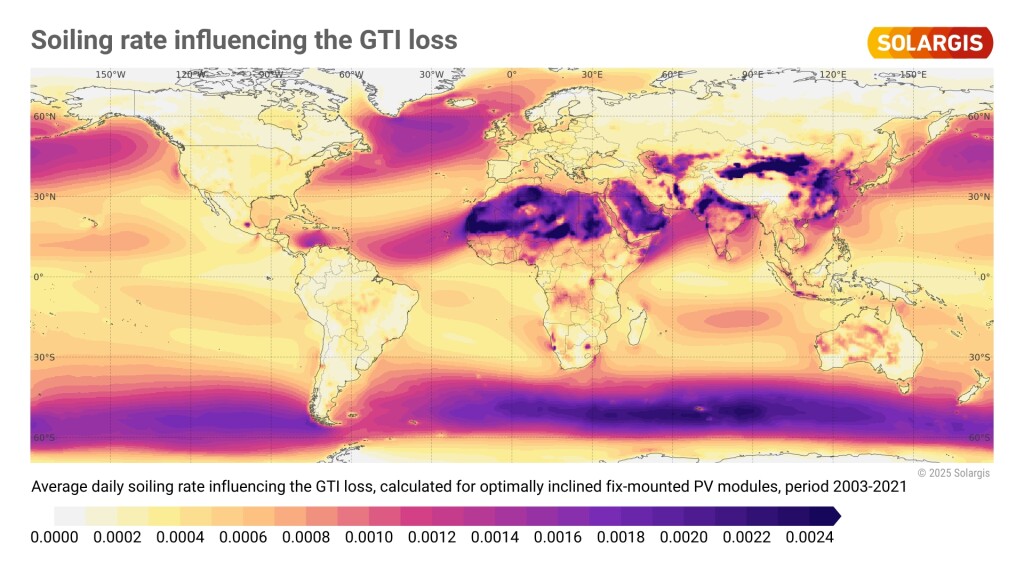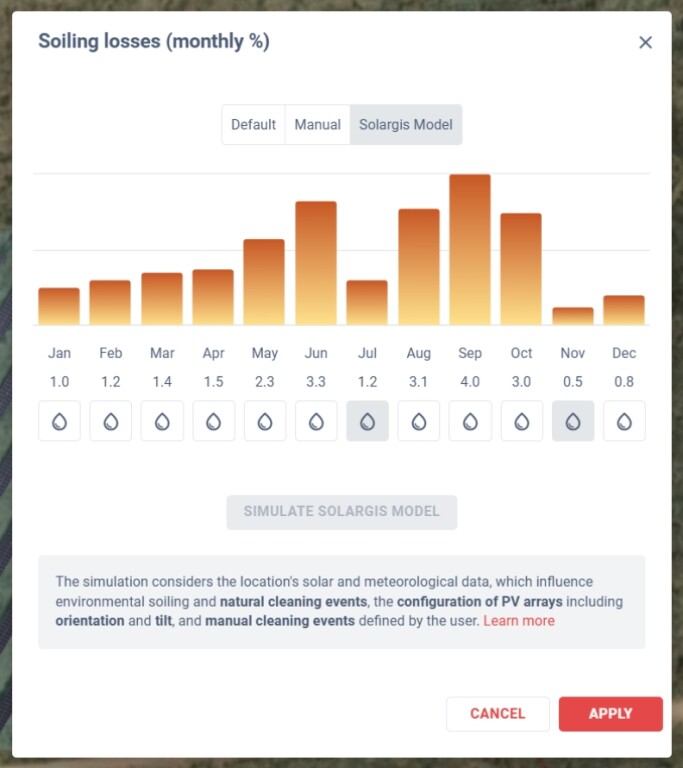Esta página aún no está traducida al español. Puede verla sólo en inglés.
We’ve just added another layer of precision to Solargis Evaluate. Following the recent launch of snow loss calculations, soiling losses are now also part of our PV simulation toolkit – helping developers, investors, and technical advisors model real-world PV performance more accurately.
The new Solargis Evaluate, launched earlier this year, now allows users to automatically simulate soiling losses using the Solargis soiling loss model. This helps PV developers and operators plan solar panel maintenance more effectively and mitigate financial losses caused by soiling.
Soiling occurs when dust, sand, pollen, pollution, or other particles accumulate on PV modules, reducing the amount of solar radiation that reaches the cells and thereby lowering energy production. In some regions, soiling can cause substantial energy losses if not properly monitored and managed.
Understanding soiling losses is critical especially in arid and semi-arid locations, but also in areas with high agricultural or industrial activity. As these losses directly impact PV output, accounting for them is key to realistic performance estimates and better-informed decisions.

The Solargis soiling model consists of two main components:
The Solargis soiling model integrates data from two leading sources:
When calculating soiling losses, Solargis Evaluate users can now choose from three options:


Once defined, the losses are factored directly into the energy yield calculations, providing a more accurate PVOUT (net AC output) and giving you a better understanding of how soiling affects your project’s performance over time.
This functionality is available in the Energy System Designer within Solargis Evaluate, where soiling losses can be applied on a monthly basis.
Incorporating soiling losses into energy yield simulations ensures that financial models reflect the true variability of PV performance. It helps you:
As with snow losses, our aim is to equip you with solutions that reflect the realities of PV operations in different environments and climatic zones.
Solargis Evaluate is designed to bring a new level of precision to PV project evaluation. Leveraging 15-minute time series data, proprietary albedo data, ray tracing technology for bifacial PV simulations, and now snow and soiling loss modeling, you can capture more variables that affect PV performance – all in one cloud-based platform.
Want to learn more about how to apply soiling loss assumptions in your project?